ANTARCTIC BLOG: The Journey South
11 January, 2017 RRS Ernest Shackleton, Signy
A new blog post from ecologist Jes Bartlett, who is working at Signy research station for the Austral summer, about her journey South. Read her previous post about pre-deployment training here.
After the paper snowflakes, penguin shaped canapés and oceans of gin from my leaving party came the reality of farewells: Sitting in the military lounge at Brize Norton in Oxfordshire, I shared a sobering coffee with my partner as we stall the inevitable goodbye for as long as we dare. I’ve seen several teary goodbyes already. Half the people on this RAF flight are from the British Antarctic Survey, most heading for 18 months at Halley – the famous moving research station on the Brunt Ice Shelf – the rest are military or Falkland Islanders. No obvious signs of tourists, although perhaps the odd photographer come to accrue some penguin portfolios now that I look around. We depart the UK late at night from the RAF base and head South for the first leg of a week of travel.
The next day we refuel on Ascension Island, a speck of British Overseas Territory in the Atlantic Ocean, just south of the equator. We spent the time stalking around inside a fenced area on the military base next to the beach like prisoners on exercise, taking pictures of distant mountains and wafting palm trees through the chicken wire. I stubbornly stand in the sunshine despite the tropical heat, soaking up the drops of warmth and Vitamin D whilst wondering how cold it will actually be on Signy, whether I could feasibly get a winter tan in 2 hours, and why I had ordered a large mug of tea when it was pushing 30 degrees.
A mere 8 hours of flying later, we arrive at another military base: Stanley, the Falkland Islands. I got my passport stamped and my leg sniffed by a cheery Labrador as we went through security. Bonus. Military personnel, security dogs included, were much nicer than any staff I’ve encountered at airports. No plastered on smiles and falsely intonated voices. Just people in camo-fatigues who seemed genuinely pleased to see you. An hour-long journey through sage-green slopes of grass cropped by sheep, with rivers of boulders and scars of sand through them like a derelict golf course, took us to the RSS Ernest Shackleton which was moored up in Port Stanley.
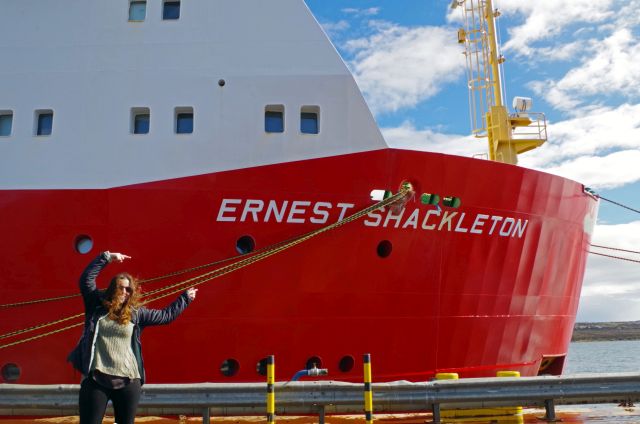
Seeing the “Shack” for the first time was a little like meeting a celebrity. You hear so much about these ships that sail the Southern Ocean for the British Antarctic Survey, see so many photographs of them and hear so many stories about times spent aboard, that it’s like visiting a famous building, or meeting a famous person. We’ve even remarked that each one has a personality: The RSS James Clark Ross is primarily a scientific vessel used for marine work. It’s a more formal ship, even has table service at meal times. The Shackleton is more casual: gingham tables in a diner-like mess room, buffet carts, and a relaxed crew full of banter. It’s cosy and remarkably charming, which says a lot for a ship who is built to break ice and sail the roughest oceans in the world.
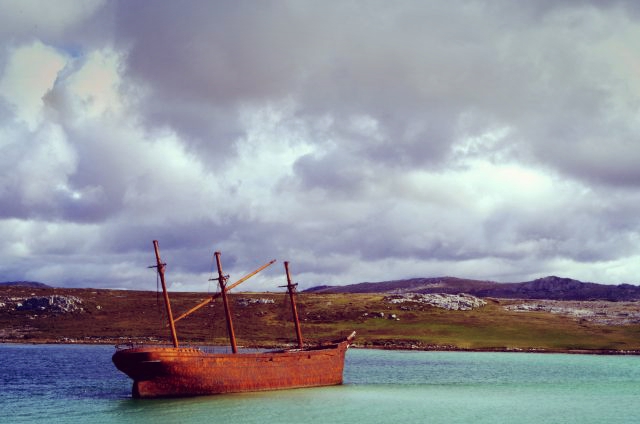
I spent 4 nights on the Shack, including one moored up in Stanley where we got to spend a day sightseeing around the beautiful Gypsy Cove (first penguin!) and lunching in distinctly English cafes whilst musing on the fact that we were geographically in South America. We all liberated the gift shops of penguin mugs and postcards before setting sail the following day. Thankfully I didn’t succumb to sea sickness, in part because we only had one day with a few meters of swell, which is remarkably calm for the Drake Passage. Others weren’t so lucky and we barely saw some people the whole trip. Our days were given rhythm by a steady stream of sumptuous food from the galley crew: Steve, the master story teller and head cook; 2nd cook John, a man whose smile could rival a Cheshire cats; and the inimitable and fabulous steward, Russell.
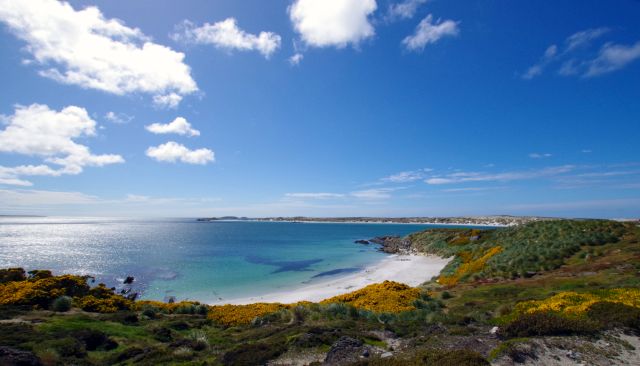
At sea we saw nothing but our wake behind us and rolling swells ahead for more than a day before some petrels appeared at the side of the ship. They were playing in the drafts created by the ship’s wake. They surfed the crests of the waves on invisible currents, darting across the foamed tips like they were the ones in control of the water and orchestrating it into peaks and troughs. Late the next day I saw my first iceberg, a vast chunk of retina-scouring white on the darkening horizon. That same day the bridge spotted a whale off the port side, but from deck we couldn’t see much more than spouts of water and a dark ridge appear, loch-ness like, in the waves. But it was nice to know they were there.
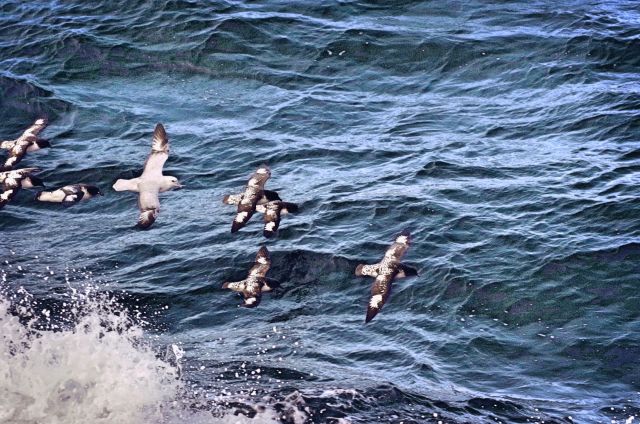
On the final night I hung out in the sauna for way too long with my cabin buddy Becky, an atmospheric chemist working for BAS who is off to spend some time drilling ice cores so she can study ozone, and played board games to a gentle roll of the waves with the lovely Alex, James and Josh, an electrical engineer, the data manager and the mechanical engineer respectively and part of the overwintering team for Halley. That night as we slept we sailed across the Antarctic convergence and when we woke the next morning it was to unimaginably huge icebergs outside all of our porthole windows. Mile long slabs of impossibly white cliffs. We had arrived. This was it, the South Orkneys. And it was stunning. Snow and ice capped mountains thrust out of a blue sea littered with islands of ice big enough to land planes on, it seemed. An hour or so later we anchored in sight of Signy research station and I got my first glance at my new home.
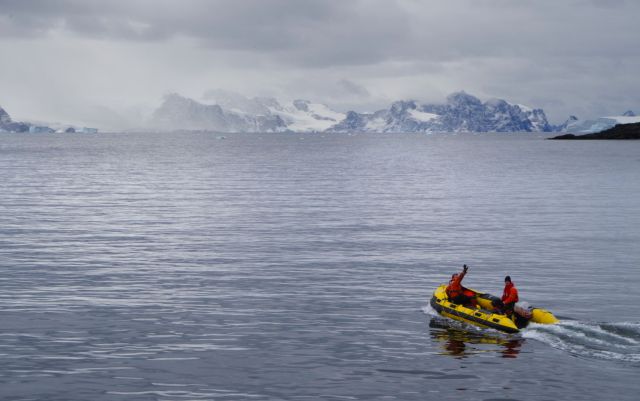
So now I’m here. I made it to Antarctica. Ten years of waiting and a week of travelling. Its more beautiful than I expected, the wildlife is outrageous, but it’s the people that have made this trip what it is so far. But, that said, I’m yet to meet a penguin chick!